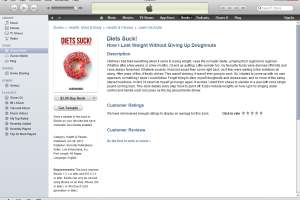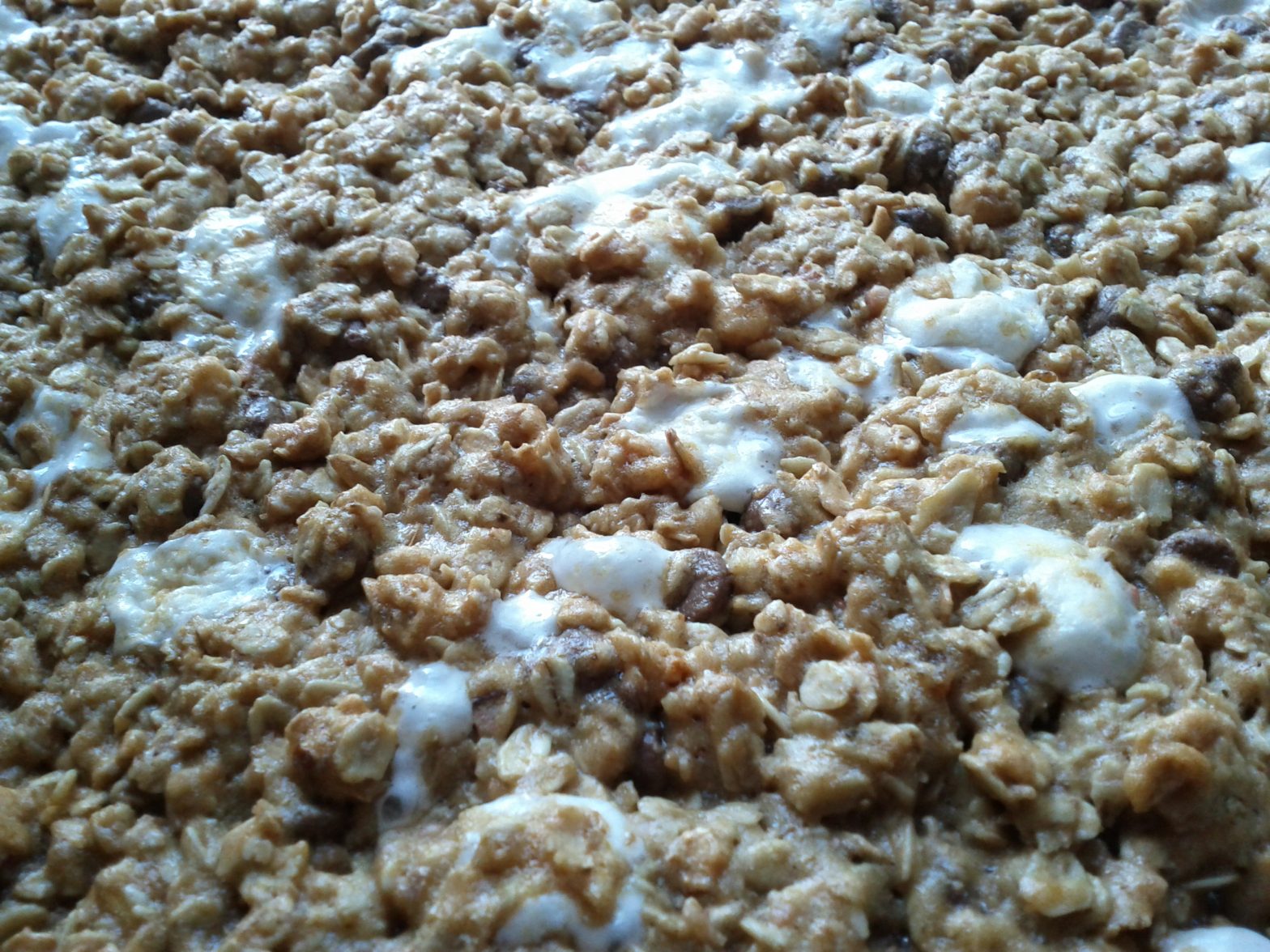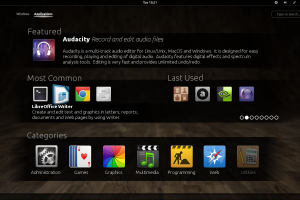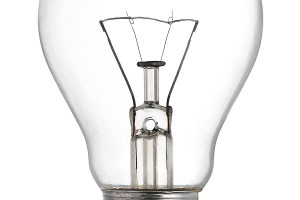I’m happy to announce that Diets Suck is now available in the iTunes store. Still waiting to hear back from Barnes & Noble to see if they’ll accept it for their own eBook outlet.
Update: The book is now on Barnes & Noble as well!
Every other post.

I’m happy to announce that Diets Suck is now available in the iTunes store. Still waiting to hear back from Barnes & Noble to see if they’ll accept it for their own eBook outlet.
Update: The book is now on Barnes & Noble as well!

I made some granola bars today. I used the Chewy Granola Bars recipe from AllRecipes, and substituted the oats for a strawberry granola mix from Bulk Barn. I also added marshmallows.
The results were pretty good, though next time I’ll use oats proper and skip on the marshmallows.

I’m a pretty big fan of GNOME 3, the latest iteration of the popular desktop environment. The designers at GNOME anticipated that users would interact with their computers through touch, not just the mice and keyboards of today. Their attempts to satisfy both means of interaction led to a kind of hybrid interface design that isn’t too unlike what Microsoft unveiled with Windows 8.
This makes GNOME3 suitable as a desktop environment for a tablet computer as much as a laptop. This is great from a user’s perspective, where a consistent experience was threatened by the diversity of the hardware coming into the market.
As great as I find GNOME3, however, there are aspects that are wanting. The most notable of these is the application menu, which copies what’s found in Apple’s iOS and Google’s Android. Basically, it’s a screen with all the icons presented to you in one shot.
This clutter makes it difficult to spot what you’re looking for. The example above, from my computer, shows a menu with 54 icons displayed at once. Many users will have to essentially scan every one of these, a relatively lengthy exercise, to find the icon for the application they want. This isn’t much better than the old joke about the cluttered Windows desktop.
I think we can do better. Here is some concept art I devised for an alternate main application menu.
Instead of displaying all the icons at once, the user would be presented with a selection of the most frequently called applications and the most recently used. Users usually make use of a small pool of applications, much smaller than the totality of all the programs on their system, so this would cut down instances of pixel hunting.
The “Featured” application at the top would randomly select one installed application and pull its description. More experienced users could substitute this for a “recent documents” bin, but novices might appreciate the insight.
I think the design of full-screen application menus should take a page from the likes of the Ubuntu Software Center, whose designers have found ways to balance quality with quantity. It’s certainly a step up from the visual diarrhea of the current approach.

This week marked the last episode of CBC’s Dispatches, a news programme that covered issues big and small from the world around. Officially it was a victim of the latest rounds of budget cuts at the Canadian Broadcasting Corporation, though one could argue this was also part of a larger international trend towards the reduction of state-sponsored journalism. Radio Netherlands, another credible producer of news, have also slashed their programming, as have the BBC.
This is quite unfortunate, because the likes of CBC and Radio Netherlands had produced some of the highest quality reporting available anywhere. Dispatches was particularly valuable as its extended format allowed journalists to go beyond the formula demanded by condensing stories to thirty seconds for newscasts. Instead of the standard “there was a bomb/riot/flood, thirty people are dead”, we could actually go behind the stories and get valuable insights into unfolding events.
Dispatches had no real equal, magnifying the loss of this kind of perspective. Everyone who appreciates the world for all its wonder will be the poorer for it. As unfortunate as it is unsurprising, the archives of the show are also only to stay online until December 2013.
The world is moving away from spending big money on journalism. Newspapers have been closing foreign offices for years now, with their own domestic reporting being substituted for material obtained from news agencies. Public broadcasters have seen cuts after cuts, dumping their more intellectual programming for the sake of easy sells to remain palatable in the face of its commercial competition. Rare are the likes of The Economist, who have survived this tumultuous transition period in consumer preference.
The Internet, and the rise of free news have been the catalyst for this shift. The is much good in this, in the form of greater accessibility. The cost, meanwhile, has been content. You need money to be able to conduct good journalism in foreign places, and that’s just no longer possible. The solution ought to be to invest more in public broadcasters to pick up the slack where private entities have no capacity or interest, but that seems counter to public sentiments. So instead, we are closing our eyes off to the world. What a loss for us all.
Listen to the final episode of CBC’s Dispatches here.

This is my go at answering this age old philosophical question.
The very premise of the question is flawed as it incorrectly assumes that there’s an answer. The idea of an answer would make sense if I believed that my life was covertly dictated by some ethereal being. I don’t.
I believe that I’m the product of energy differentials that caused things to happen. In this context, I don’t believe that I have any more meaning than the fact that this grain of sand is in one place as opposed to a single millimeter to it’s left. The interactions that led to its genesis, evolution, and placement have no more thought behind them (that is to say, none) than those series of interactions that led to the primordial soup, millions of years of evolution, and culminated into my being.
So meaning wasn’t given to me. Not that I should have been surprised, given that this is a construct of our mind to begin with. But if the answer isn’t handed down, and I know that it’s relevant only to my little human brain, then this becomes a question only suitably addressed by myself.
In other words, the meaning of my life is whatever I choose to make it. How liberating is that?